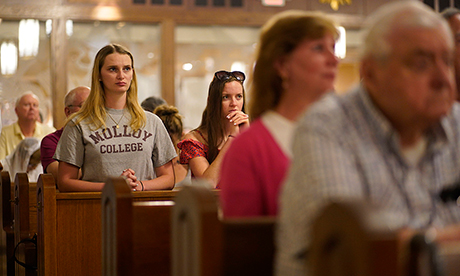If “demography is destiny,” then a certain narrative is baked into the data describing the Catholic Church in the United States. Change is the primary theme, the constant reality over decades.
In today’s parlance, the church is often said to be at “an inflection point.”
Such points certainly seem ubiquitous during the Francis papacy.
Change has been at the core since Pope Francis appeared post-election on the balcony of St Peter’s Basilica having left behind most of the ornaments of the office.
His use of the synodal process seems designed to gather in all of the changes that are altering the landscape of the church and causing, at least in some circumstances, an exodus from usual Catholic practice.
From the global to the local, things are changing.
In the United States, this is no longer your mother’s or grandmother’s church, but one that is increasingly multicultural and non-European, with fewer ordained priests every year.
Those are trends that are beyond hierarchical control.
Changes in the institutional structure, brought on again by demographic forces beyond the control of any authority figures, are also inevitable: The numbers simply no longer exist to sustain the parochial structures of yesteryear.
Unclear is exactly what form those inevitable changes will take.
Ever larger congregations to accommodate decreasing numbers of priests?
More responsibility for permanent deacons, another layer of all-male ordained clergy? Greater roles for women, perhaps even as deacons? Maybe something entirely new?
Dramatic jolts to local communities such as closings or new authoritarian pastors, combined with the sustained effects of the sex abuse scandal and cover-up, not to mention the COVID-19 pandemic, all probably have contributed to the growth of the diaspora.
However, the exodus began long before those events; it parallels the diminishment of Catholic institutional life in the United States that has been underway for decades and, in some categories, for more than half a century.
The Center for Applied Research in the Apostolate (CARA), affiliated with Georgetown University, has a page on its website of frequently sought statistics on major trends in the Catholic world.
It is largely a tale, in numbers, of ongoing and massive institutional change. It could be viewed, at least in part, as a story of insistent, decadeslong decline.
For instance, what once was referred to as a priest shortage, suggesting it was a temporary supply problem to be remedied by ramped-up recruiting and revved-up vocation offices, has become a permanent reality.
However the data show that the numbers just represent a return to what once was normal after an unusual period of vocational growth.
The year 1965 is the first on the CARA chart and the highest point shown for Catholic clergy in the United States, with 59,426 total priests, including diocesan and members of religious orders. In 2022, the number was 34,344.
The data, according to CARA, covers dioceses and eparchies in the United States and in the U.S. Virgin Islands. Continue reading
- Tom Roberts was NCR executive editor from October 2018 through April 2020 and NCR editor from 2000-2008. He is the author of “The Emerging Catholic Church: A Community’s Search for Itself” and “Joan Chittister: Her Journey from Certainty to Faith”.
- Part one of this series appeared in the previous edition.
News category: Analysis and Comment.




